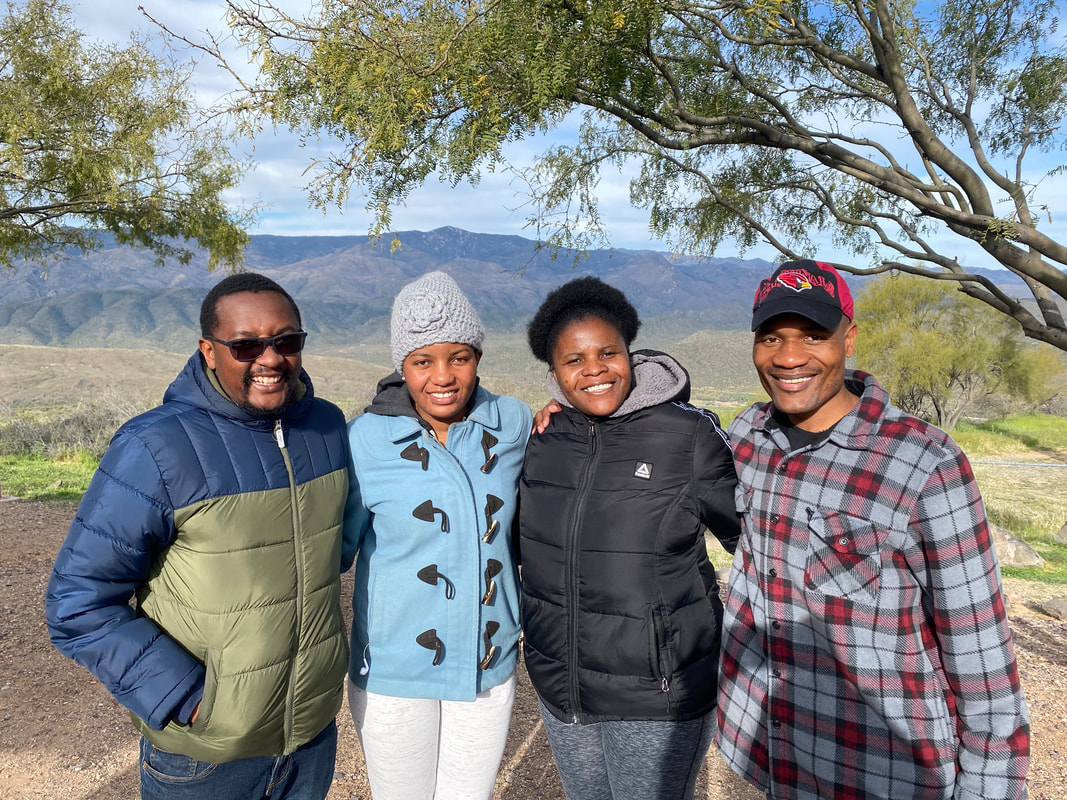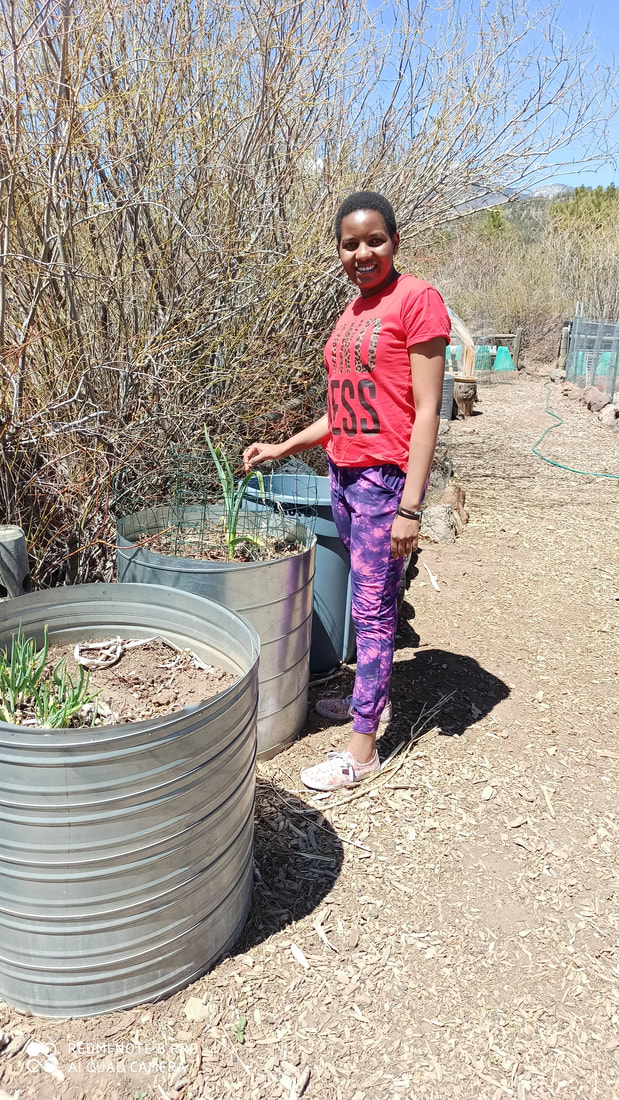Rosemary LoganCheckout the Spring 2020 section of NAU's two-semester Permaculture Design Course Blog! Archives
December 2023
Categories |
Back to Blog
Three Malawians at Colton Garden5/4/2020 Albert Einstein said and we quote, “Never regard study as a duty but as an enviable opportunity to learn to know the liberating influence of beauty in the realm of the spirit for your own personal joy and to the profit of the community to which your later works belong." This was fully manifested when Richard, Shonduri, and I visited Colton garden. It was a normal Friday and as usual in our trio, we decided to visit Colton garden to fulfill the volunteer hours for our class. Colton garden which is Located at 700 feet at the Museum of Northern Arizona (MNA) in Flagstaff, the Colton Community Garden (CCG) is an inspiring space for showcasing high elevation growing strategies and the bio-cultural diversity and heritage of the area. At the heart of the CCG’s mission is to generate, restore and inspire movement towards a more vibrant, resilient and sustainable food system in alignment with MNA’s mission which is to “inspire a sense of love and responsibility for the Colorado Plateau.” We took off at the downtown connection center heading towards Colton garden. Once arriving safely at the garden, we were greeted by Rosemary and Garrod. Rosemary took us to a little tour of the new permaculture food forest section of the garden. Our initial thought was that it this project would be like normal work like we do in Malawi, digging up the soil or mixing the soil with compost and planting trees. It was during the orientation where we learned a different series of challenges with growing at high elevation in an arid landscape- a climate quite different from Malawi. Colton garden faces the usual challenges of growing at high elevation and navigating vermin such as an adjacent prairie dog’s colony and a healthy population of gophers. Despite these challenges the garden has grown exponentially in annual crop production and volunteer participation. In contrast to prairie dogs and gophers, Malawi faces a challenge of termites. These termites attack the roots of the plants. Malawi being a tropical country, has a hot and rainy season from mid-November to April but due to climate change, some areas experience drought whilst other areas experience floods. Due to these challenges, sometimes it is hard to grow crops. A lot of farmers who live in the areas that are affected by drought opt to grow perennial crops like sweet potatoes, and cassava. The leaves of these perennial crops are used as relish. As we started digging the soil, we were surprised to find the chicken wire at the bottom. That was the time we learned about one of the great lessons in the garden. Rosemary explained that there are both gophers and prairie dogs in the area. So, the chicken wire prevents them from attacking the roots of the trees and other annuals. This was the first time we learned of such a simple but innovative way to prevent these animals from attacking the roots of the trees. In this process there are no chemicals applied to the soil, as a result, leaving the soil in its original form permitting microorganisms to breed in large volumes. Other non-organic strategies might involve something like poisoning the gophers and prairie dogs which could be detrimental to the soil and larger ecological health. Other organic ways to control gopher populations include both trapping and inviting predators such as snakes, hawks or owls to the garden. In Malawi, most of the times, the Agriculture Extension Development Officers advice farmers to spray chemicals as one of the ways of dealing with termites. In some cases farmers use ashes who can not afford chemicals use ashes, but this method is less effective because the ashes do not terminate the source of the termites, they only kill those termites that are visible. We continued digging the holes and we managed to dig up to more than 15 holes in readiness for fruit trees which will later be arriving in an order by mail. In each of these holes we placed wire baskets to protect the roots of the trees/shrubs from the gophers. These baskets were called “Root Guard” While these baskets can also be made by hand with leftover wire materials, the funds from permaculture garden fundraiser in December made it possible to purchase these handy baskets. At the end of our work we decided to take a larger tour around the garden. We were amazed by how the land has been effectively been put into use. The demarcations for each crop were marvelous and well thought of. It was obvious that there is so much care that is being put into the land to make sure that it bears the intended fruits. We were astonished by the investment that was done on a small piece of land. The garden is being looked after very well; an indicator to us that people are connecting well with nature. Key reflections that we made after working in the Colton garden included:
Recipe for pumpkin leaves Ingredients 2 lb pumpkin leaves 1big very ripe Tomato 1tsp Salt 6 cups Water 1 cup Groundnut/peanut flour Method Wash the pumpkin leaves and break of the stem and pull of the silk from the pumpkin leaves. Do one leaf at the time and chop them Boil 1cup of water and add salt, Cook the leaves in boiling water for 5-10 mins and add the groundnut flour and the diced tomatoes and simmer for 5-10 mins until tender. Recipe of sweet potato leaves
Ingredients 2 lb Sweet potato leaves 1big very ripe Tomato 1tsp Salt 6 cups Water 1 cup Groundnut/peanut flour ½ Lemon Method Wash the sweet potato leaves and shop them Boil 2cups of water and add salt, diced tomatoes and lemon juice Cook the leaves in boiling water for 5-10mins and add the groundnut flour and simmer for another 5 -10mins until tender.
0 Comments
Read More
Leave a Reply. |
 RSS Feed
RSS Feed








